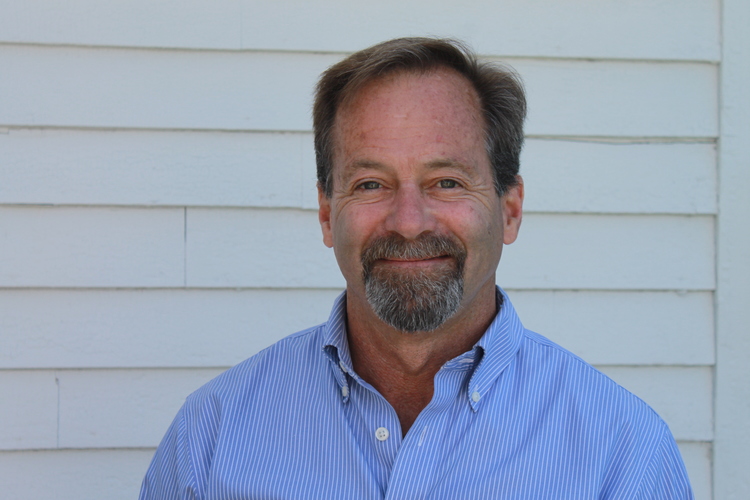Jerald is a board-certified prosthetist and orthotist (American Board for Certification, ABC) with 20 years of experience in the field. Jerald has an extensive background in engineering and computer-aided design and has also studied graphics, sculpture and pottery. Jerald did his undergraduate work at Cornell University and graduated cum laude with a degree in Physics and Cognitive Studies. He has also been a guest lecturer for the University of New England's PhD Physical Therapy program.
In addition to seeing patients in their clinic, Jerald is very involved in research and development and has invented a bracing treatment for infants with clubfoot that is in use around the world. He is constantly working to bring new, patient-inspired, solutions to reality.

Photos courtesy of Cunningham Prosthetic Care
The Cunningham Brace was designed by Jerald Cunningham, who runs his own clinic in the US. It works using a firm strap around the thigh and a spring that holds the brace up against the bottom of the foot. This means that the brace is always gently stretching your baby’s foot into the correct position, in a similar way that a therapist applies manipulation.
Jerald developed the brace at the request of an orthopaedic surgeon and colleague who saw how distressing the boots and bar process was for many children and parents. Jerald has worked on the design for more than 10 years, tweaking as he goes, based on x-ray evidence after every patient fitting.
The big difference is that the Cunningham Brace is flexible and only fitted to the affected leg. This allows for the sort of dynamic movement you’d expect in babies, such as crawling, rolling and standing. Greater activity helps build a more developed muscular system – particularly calf muscles. Anecdotally we’ve seen a lot more symmetry in calf muscles using the Cunningham Brace than boots and bar. And because it’s a different kind of mechanism we don’t have to strap the feet up so tightly, which reduces issues such as blistering on the legs.
At your first appointment we will take measurements and fit your child with their first Cunningham Brace. We’ll show you how to put the brace on and take it off and book you in for a review a week later. We then schedule a series of reviews as your child grows to check progress and ensure that your child is maintaining the correction. This can be done in the clinic or virtually via a system like Skype. There are lots of simple things we can adjust to encourage correct development.
The Cunningham Brace is made from a series of measurements that we can either take in the clinic or help you to take during a virtual appointment. We hold a range of Cunningham braces in stock that we can adapt to the correct size and foot type of your baby. This process normally takes a few hours unless your child has a size that is out of the normal range or we do not have it in stock.
It depends on your child and the complexity of their case. On average, though, we’ll be looking to review your baby’s progress once a month over the course of treatment.
Treatment lasts about two years – this is around one-third of the time other methods require. In the first year, your baby will wear the brace for 23 hours a day – compared with boots and bar which can only be done for three months. This means we can help correct your baby’s foot while their tissue and bones are at their softest and most compliant. Once your baby is standing, they will only wear the brace during nighttime and naps.

“It’s life-changing, my swimming coach has even remarked what a difference my treatment has made" Read how pectus bracing treatment helped to correct Aris' complex chest deformity, involving a combination of pectus excavatum, pectus carinatum and rib flaring.

Cerebral palsy patient Lucas sees significant improvement in his walking after only six months in his new custom Ankle Foot Orthoses (AFOs), designed by Professor Saeed Forghany in our Manchester clinic. Hear how a detailed gait analysis and bespoke AFOs significantly improved Lucas's gait and comfort.

Freddie’s positional plagiocephaly was treated successfully with the LOCBand Lite, going from 11mm to 2mm after four months in his helmet.

Adult club foot (talipes) patient Natasha says, "I cannot stress how amazing my AFOs are and how they have changed so much for me. The support they give me allows me to walk without crutches outside the house for the first time in over fifteen years."

Diagnosed with adolescent idiopathic scoliosis at 14 years old, Polly and mum Zoe looked to the LOC Scoliosis Brace to help her curve and avoid surgery at a later date.

LOC opens its first clinic in Northern Ireland, LOC Belfast, offer non-surgical orthotic treatment for scoliosis, pectus carinatum and pectus excavatum. Here, we will also be able to provide orthotic treatments for a range of adult and paediatric lower limb conditions including cerebral palsy, spina bifida, hypermobility, stroke, post-polio syndrome, and multiple sclerosis.

Mum Natalie shares her experience of having both her identical twins diagnosed with craniosynostosis. Ella and Nina had surgery at Great Ormond Street Hospital before going through cranial remoulding therapy at the London Orthotic Consultancy.

See how a thorough gait analysis and a correctly-fitted, bespoke Reciprocating Gait Orthosis (RGO) helped Ted, a spinal surgery and cancer survivor, improve his rehabilitation and mobility goals, getting him back on his feet again.